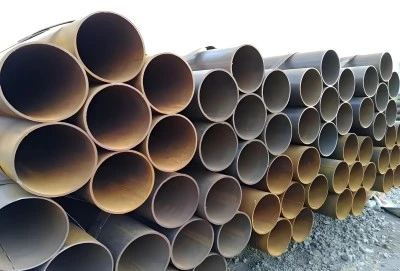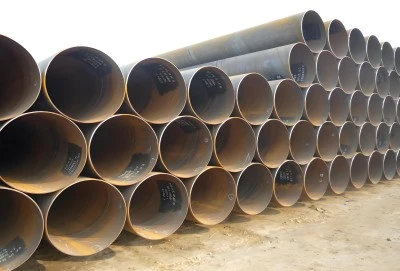When it comes to construction and engineering projects, choosing the right materials is crucial for ensuring structural integrity and longevity. One such material that has gained widespread popularity is the hollow section pipe. But what exactly is a hollow section pipe, and why is its weight such an important consideration? In this comprehensive guide, we'll delve into its world, explore the factors that affect its weight, and discuss why different materials can result in varying weights. This article will bring you useful insights into the intriguing world of hollow section pipes, regardless of whether you work in construction or are just inquisitive about building materials.
|
|
|
What Is Hollow Section Pipe?
Hollow section pipes, also known as structural hollow sections or tubular steel, are highly versatile building materials widely used in various construction and engineering applications. These pipes are defined by their hollow cross-sections, which can take on different shapes, including square, rectangular, or circular. This unique configuration provides a remarkable strength-to-weight ratio, making the products particularly valuable in structures where both durability and a relatively low weight are crucial.
The products are designed to offer enhanced structural performance while being lightweight, which is essential for reducing the overall load on supporting structures. This makes them ideal for use in building frameworks, where they contribute to both the stability and efficiency of the construction. In addition, they are extensively used in bridge construction, where their ability to handle significant stress and load is critical. Scaffolding systems also benefit from the use of the products due to their strength and ease of handling, allowing for safe and reliable temporary structures during construction projects.
Beyond their application in construction, hollow section pipes are employed in various industrial contexts. Their ability to withstand high loads while maintaining a sleek and modern appearance makes them a preferred choice for many engineering solutions. Architects and engineers can push the boundaries of design and create unique buildings that perfectly combine form and function because to the product's inherent flexibility.
Moreover, the items' adaptability is demonstrated by their diverse finishes and coatings, which may be customized to accommodate varying environmental parameters and aesthetic preferences. Their flexibility to adapt not only makes them more functional but also guarantees that they will satisfy the unique requirements of various projects. Because of their many uses and attractive designs, the items continue to be essential to contemporary engineering and building.
What Factors Affect The Weight Of Hollow Section Pipe?
The weight of a hollow section pipe is a critical factor that influences its performance and suitability for different applications. Several key factors contribute to the overall weight of these pipes:
- Dimensions: The size, including its length, width, and height (for rectangular sections) or diameter (for circular sections), directly impacts its weight. Larger pipes naturally weigh more than smaller ones.
- Wall Thickness: The thickness of the pipe's walls is a crucial factor in determining its weight. Thicker walls result in a heavier pipe but also provide increased strength and load-bearing capacity.
- Material Density: The type of material significantly affects its weight. Different metals and alloys have varying densities, which directly influence the overall mass of the pipe.
- Manufacturing Process: The method used to produce the hollow section pipe can affect its weight. For example, cold-formed pipes may have slightly different weights compared to hot-rolled pipes due to variations in the manufacturing process.
- Surface Treatments: Any additional coatings or treatments applied to the pipe's surface, such as galvanization or paint, can add a small amount of weight to the final product.
Understanding these factors is essential for engineers and contractors when selecting the appropriate hollow section pipes for their projects. Balancing weight considerations with structural requirements ensures optimal performance and cost-effectiveness in construction.
Why Different Materials Will Result In Different Weights Of Hollow Section Pipe
The choice of material for hollow section pipes plays a significant role in determining their weight. Different materials have distinct properties, including density, which directly affects the overall mass of the pipe. Let's explore some common materials used in hollow section pipe manufacturing and how they impact weight:
- Steel: Steel is the most commonly used material due to its excellent strength and versatility. However, steel is relatively dense, making it one of the heavier options. The specific grade of steel used can also affect the weight, with high-strength steels potentially allowing for thinner wall thicknesses and, consequently, lighter pipes.
- Aluminum: Aluminum pipes are significantly lighter than their steel counterparts, making them an excellent choice for applications where weight reduction is crucial. Despite being lighter, aluminum pipes still offer good strength and corrosion resistance, making them popular in industries such as aerospace and automotive.
- Stainless Steel: Stainless steel hollow section pipes offer excellent corrosion resistance and durability. They are generally heavier than standard steel pipes due to the addition of alloying elements like chromium and nickel, which increase the material's density.
- Composites: In recent times, hollow section pipes were recently constructed from composite substances such as fiber-reinforced plastics. In recognition of the unbelievable strength-to-weight ratio associated with these substances, pipes constructed from them are extremely portable while still having outstanding operating characteristics.
Many considerations, such as the particular use, the surrounding environment, and the project requirements, influence the choice of material for hollow section pipes. Larger steel pipes could be required for projects needing maximum strength and longevity, even if lighter materials like aluminum or composites might be preferred in weight-sensitive applications.
Contact Longma
In conclusion, understanding the weight of hollow section pipes and the factors that influence it is crucial for making informed decisions in construction and engineering projects. By considering dimensions, wall thickness, material properties, and manufacturing processes, professionals can select the most appropriate products for their specific needs. Whether prioritizing strength, weight reduction, or corrosion resistance, the versatility of the product makes them an invaluable asset in modern construction and design.
For those seeking high-quality products, LONGMA GROUP offers a comprehensive range of options covering three grades with stock quantities ranging from 50 to 150 tons. If you're in the market for reliable hollow section pipe manufacturers, don't hesitate to reach out to LONGMA GROUP at info@longma-group.com for expert guidance and top-notch products.














